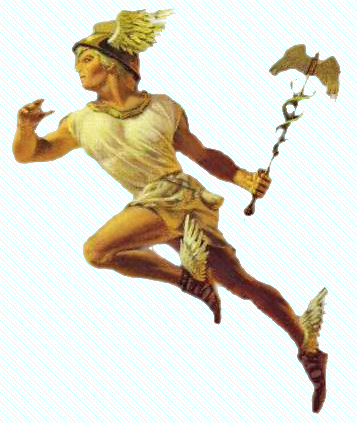Home »

Cannonball Planet Mercury to appear as morning star
A starry proposal to the College of the Rockies and a pending Dark Sky Preserve in the Okanagan
By Dan Hicks
As our innermost planet’s orbit never takes it any further than 28 degrees from the sun (from our Earthly perspective), Mercury is visible only as a morning or evening star and, in the dawn twilight of November 28, 29 and 30, ascends to an altitude of 10 degrees or more in our southeastern sky while shinning at a bright minus 0.6 magnitude as a morning star apparition 37 minutes before sunrise (see chart above & table below); the planet will be a bright stellar object low on our southeastern horizon in its best show of the year – simply look to where the sun will rise. Viewed telescopically, Mercury would appear as a white seven-second diameter slightly gibbous orb.
Star chart from Glenn Ledrew for SkyNews Magazine.
 Sharing the southeastern dawn sky with Mercury from above, will be the now much dimmer planet Mars at magnitude 1.7, and two prominent zero magnitude stars that will be almost as bright as Mercury – blue white main sequence Spica and orange giant Arcturus. Contemplating the scene in a true distance perspective, the apparent visual association between these heavenly bodies is illusory. We will see fellow planets Mercury and Mars at 8 and 19 light minutes distance from us but, though a stellar neighbour, Arcturus is 37 light years away; follow the arc of the Big Dipper’s handle and you will “arc” to Arcturus – the “bear watcher.” At 250 light years distance, Spica is seven times further and seven times stranger, varying in brightness, it is not a single star at all, but rather a quintuple star system; we are seeing an amalgam of five gravitationally-bound stars circling each other as they were 250 years ago.
Sharing the southeastern dawn sky with Mercury from above, will be the now much dimmer planet Mars at magnitude 1.7, and two prominent zero magnitude stars that will be almost as bright as Mercury – blue white main sequence Spica and orange giant Arcturus. Contemplating the scene in a true distance perspective, the apparent visual association between these heavenly bodies is illusory. We will see fellow planets Mercury and Mars at 8 and 19 light minutes distance from us but, though a stellar neighbour, Arcturus is 37 light years away; follow the arc of the Big Dipper’s handle and you will “arc” to Arcturus – the “bear watcher.” At 250 light years distance, Spica is seven times further and seven times stranger, varying in brightness, it is not a single star at all, but rather a quintuple star system; we are seeing an amalgam of five gravitationally-bound stars circling each other as they were 250 years ago.
Contemplative dawn sky stargazers may thus enhance their cosmic consciousness, but risk ruining their capacity to fully enjoy the ninth Stars Wars space fantasy movie coming to us in December, where the characters flit across their pretend “galaxy far, far away” as if they were commuting through downtown Cranbrook.
Mercury is in the constellation Libra (the scales), and Mars and Spica are in Virgo (the maiden), both are zodiacal constellations. Arcturus is in Boötes (the plowman) which forms a kite-shaped asterism. These three constellations are considered to be spring constellations because they are prominent in our spring evening sky, and accordingly, are sure to make anyone beholding them feel just a little warmer inside.
Mercury was the speedy messenger to the gods in Roman mythology, and the Romans bestowed his name upon our innermost planet because, though confined to our pre-sunrise and post-sunset skies, Mercury shifts its position among the stars more quickly than the other five naked-eye observable planets because of its close-in orbit; an oblique orbit inclined seven degrees to our Earth’s orbital plane, hence the planet does not travel the same ecliptic path in the heavens as that of the other seven planets and our sun.
Mercury also has a more radically eccentric orbit than any other planet – its closest approach to the sun is 66% that of its furthest distance away.
Besides being closest to the sun, Mercury is our smallest planet, and is one of our four fellow rocky inner planets, all of which contrast greatly with the four outer gas giants. Mercury is oven hot when exposed to the sun, yet so deeply frozen in its shadows that ice exists within its polar craters. Moonlike in appearance with a diameter only 38% that of our Earth which could contain 18 planets of its size, Mercury is a little larger than our moon and, with their cratered surfaces, both evidence the intensity of our early solar system’s heavy debris bombardment; since they are essentially devoid of atmospheres and have been geologically dead for billions of years – unless hammered by more space rocks, their un-eroded impact craters remain eternally unchanged.
Mercury’s largest impact crater is the 1,550-kilometre diameter Caloris Basin. Both Jupiter-moon Ganymede and Saturn-moon Titan are larger than planet Mercury.


The densest planet after Earth, Mercury is almost as dense as our Earth because its iron-rich core constitutes 42% of its volume, a composition unmatched by any other rocky planet (eg Earth’s iron core – 17%) – Mercury is an iron “cannonball”; but like Earth, its outer core is molten liquid and its inner core is solid. Unlike Earth, Mercury has a single continental plate upon which scarps evidence its contraction as its liquid iron core solidifies – the little cannonball planet is shrinking!
At an average distance of 3.2 light minutes, Mercury orbits the sun every 88 Earth days and rotates on its axis every 59 Earth days, resulting in its rotating thrice every two Mercury years – giving Mercury our solar system’s longest solar day (a solar day is complete when the sun returns to the same position in the sky) – equivalent to 176 Earth solar days – a mercurial solar day is twice as long as a mercurial year – a half-day of searing sunlight followed by a half-day of frigid darkness. At 6.0 light minutes from the sun, Venus, with its scorching dense carbon dioxide atmosphere, is our hottest planet; third planet out – the blue one – our Earth – orbits at 8.3 light minutes distance (1 astronomical unit); and the Red Planet – Mars – our future second home, waits patiently for us at 12.6 light minutes out from the sun; a welcoming world when compared to Mercury – and every other planet but Earth itself.
Though Giovanni Zupi’s 1639 telescopic observations of Mercury revealed it as having illumination phases like the moon and Venus – explainable only by its orbiting the sun (and not us), we owe our intimate knowledge of the planet to two US National Aeronautics & Space Administration (NASA) probes; Mariner 10, active in 1974-75 and Messenger, active from 2004 to 2015. Messenger orbited Mercury 4,000 times (2011-2015), leaving a wondrous photographic and magnetic field discovery legacy before running out of fuel and crashing onto the planet’s surface; its more primitive predecessor had a kinder fate – consigned to eternity as an artificial solar satellite.
In October 2018, the European Space Agency and JAXA (Japan’s space agency) launched their BepiColombo mercurial probe; scheduled to arrive in 2025 (after 7 years in space – no Star Wars’ travel time here), whereupon it will split into two orbiting probes – a magnetometer probe and a mapper probe.
Mercury’s month-end apparition as our morning star offers Cranbrook a possible consolation for our being denied an opportunity to view the historic November 11 transit of Mercury across the face of the sun, a telescopic event that will not reoccur here again until November 2052.

Though my attempt to rally the College of the Rockies to facilitate a public telescopic viewing of the Mercury transit was unsuccessful, Mother Nature herself intervened that morning with stratus cloud that precluded any such observations from Cranbrook. Nevertheless, looking ahead to a Cranbrook reimagined in 2020, I have proposed to the college that our local institute of higher learning consider hosting one or more educational astronomical telescopic evenings under the stars at a dark sky location, an unprecedented endeavour for Cranbrook, but similar to those night sky learning experiences commonly available in US national parks.
As a gesture of sincerity and encouragement, I have offered to donate to the college a serious amateur six-inch refractor go-to telescope whose last public venue was the August 2018 Subaru Night of the Falling Stars Dark Sky Perseid Meteor gathering at rural Noke Creek (west of Cranbrook). Specifically, the telescope is a Celestron C6-RGT six-inch Achromatic Refractor Telescope with VX Advanced Mount (2018 Model #21019- 1/ F/8, lens diameter 152 mm, FL 1200 mm); total cost with accessories in 2018 was $2,099.
Besides reimagining Cranbrook, an inspiring Latinized motto for my radical starry scheme might well be “ad culmina tum ad astra” – to the peaks – then the stars!; the peak possibly being no more than a promontory within our Cranbrook Community Forest – Eager Hill perhaps, whereupon we would have a grand amphitheatric view of the stars above us in what remains of our fading natural night sky.
Such starry natural world awareness advanced significantly this month in the Okanagan where the Regional District of the Central Okanagan announced that it will be applying to the Royal Astronomical Society of Canada for designation as British Columbia’s third Dark Sky Preserve – the 406 hectare Johns Family Nature Conservancy Regional Park, established on Kelowna’s south slopes in 2012.
Besides star-loving humans, RDCO Supervisor of Community Relations Isabella Hodson cites tiger salamanders, bats, and wolves as wild creatures that will benefit from the park’s secured natural darkness. I congratulate the RDCO for its big sky environmental progressivism, and acknowledge that my personal overture to our college for its engagement in some sort of public astronomical dark starry night activity, though unprecedented here, is comparatively – rather less ambitious.
But no special collegial venues are needed for Cranbrook’s early-risers to enjoy Mercury’s late November dawn sky apparition as our morning star; the knowledge that our innermost planet is a roasting-freezing little iron cannonball in orbit cannot diminish its fleeting visual appeal as seen from our own precious blue third planet whose comparative fragility we might then appreciate all the more in our most meditative Little Green Greta moments.
Sources: Royal Astronomical Society of Canada Observer’s Handbook 2019, SkyNews Magazine Nov-Dec 2019, CBC Radio – Daybreak South, astronomy.com, theatlantic.com, earthsky.org, kelownacapnews.com, nasa.gov, sciencedaily.com, universetoday.com, wikipedia.org, & worldatlas.com.
Lead image: Mercury – as the planet will appear in Cranbrook’s dawn sky on November 28, at 07:24 MST, 9 degrees above our east-southeastern horizon; Mercury is aligned with Mars and Spica. Images submitted








